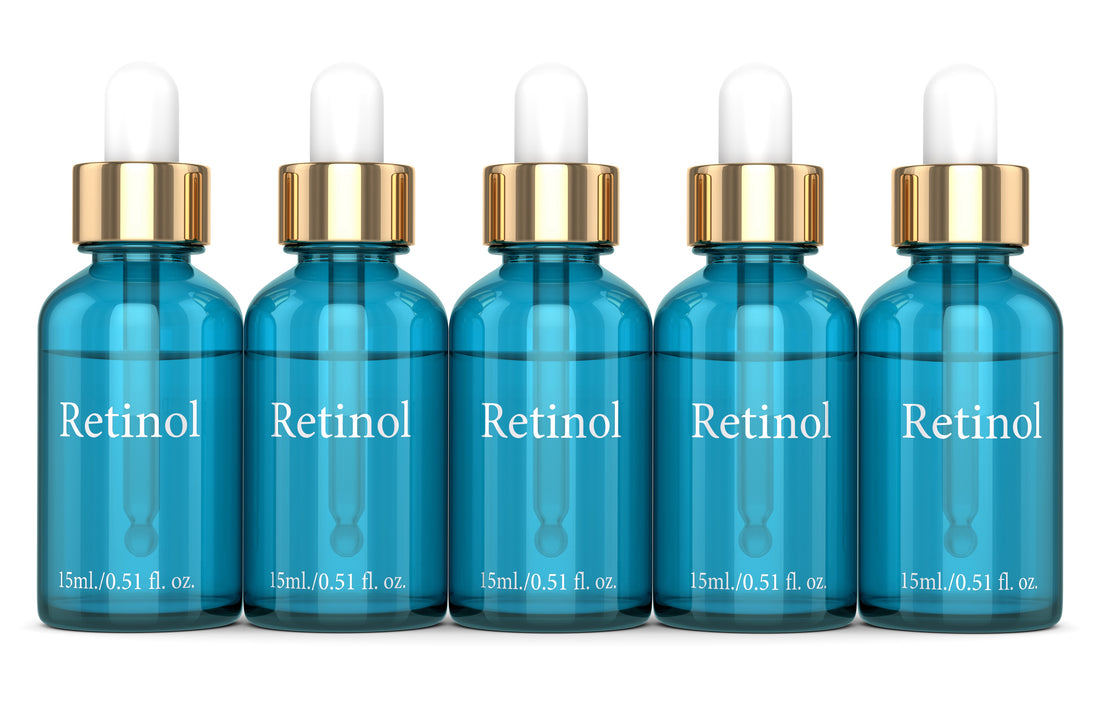
Our Best Retinol Products and Insights
Share
Skin-care innovations arrive quickly and continuously; with smart new technologies appearing every time you blink. That being said, finding the best retinol serum or cream can be understandably overwhelming.
This powerful anti-aging ingredient shouldn’t fall by the wayside; Retinol can save your skin's youth! First used in over-the-counter creams in the ’70s, this powerful form of vitamin A is prized for its proven youth-enhancing results.
Proven to increase cell turnover, cleanse pores and boost collagen, the benefits of using Retinol are numerous. But given its potency, it’s important to find a retinol product that suits your skin type and incorporate it gradually into your daily routine.
Here, Dr Gerda explains how to do both.
Understand Its Benefits
“Firstly, you need to know how retinol works to ensure it’s right for you. Retinol is one form of vitamin A (the most well-known), but all forms are known as the gold-standard of anti-ageing. Highly regarded by dermatologists and skin therapists alike, retinol is second to none when it comes to improving signs of photo-ageing. Vitamin A can stimulate cellular turnover in the skin, pushing fresh skin cells to the surface for a smoother, youthful-looking complexion. This also helps to clear pores for blemish-free skin."
Start Using It In Your Mid 20s Or Early 30s
“You don’t need to rush into retinol, but if you’re concerned about skin ageing, or you want to use it as a preventative measure, a good time to start is in your mid to late twenties. From the age of 25, your collagen levels start to deplete, so this is why it’s seen as an ideal time to start on retinol. Having said that, your early thirties is an equally adequate time to start, and some will find that a better period to transition, especially if their skin is prone to high levels of sensitivity.”
Integrate It Slow & Gently
“Try starting with a 0.1% strength retinol in your routine. This is less abrasive for certain skin types. A pea-sized amount can be used over the entire face, avoiding the eye area. I ask my patients to incorporate it as gradually as they can, using it post-cleanse but pre-moisturiser. Patients start by using it twice a week, then increase it after two weeks to every other night. After another two weeks, you can use it nightly, but only if you feel your skin can tolerate it. Some skin types will never be able to use retinol more than once or twice a week without excessive side effects, so listen to your skin. One occasion where you should avoid retinol altogether is if you’re breastfeeding or pregnant."
Check The Ingredients List
“People often think all retinol products are the same, but they’re not. It is worth looking specifically for ‘retinol’ on the ingredients list and starting with the weakest strength possible. Weaker forms of vitamin A do exist, including retinyl palmitate and retinyl acetate. But both are less likely to have as strong benefits, so make sure you always check your ingredients list or consult an aesthetic doctor or dermatologist. The gold standard vitamin A is tretinoin, which is a prescription-only product and is much, much stronger.”
Watch Out For Side Effects
“When you first start using vitamin A, it can cause skin cells to renew themselves too quickly, meaning your skin will struggle to play catch-up. This can lead to an impaired skin barrier, which is what causes visible peeling and irritation. It’s worth noting, however, that eventually your skin will adapt to the new cell renewal rate and the peeling will subside – your skin is just in an adjustment period, which is called ‘retinisation.’ Usually, this only lasts around a month and then your skin adjusts. Try to persevere for up to two months on the strength you’re using and if it becomes too much, reduce your application, as mentioned above. Having said all this, excessive stinging or seriously aggressive redness may be indicative of a general sensitivity to vitamin A. In this instance, stop using the product altogether and consult with your aesthetic doctor or dermatologist."
Use It Only At Night-Time
“Retinol should ideally be used at night-time only, post-cleanse, as it’s photosensitive. This means retinol can make the skin even more susceptible to damage from the sun, so a daily sunscreen – ideally SPF 50+ with broad-spectrum cover – is essential at all times. It should have both UVA and UVB protection, too.”
Ignore These Common Myths
“There are so many myths around retinol, but there are two that really need to be addressed. First and foremost, retinol does not thin the skin, despite popular belief. In fact, because retinol stimulates the collagen-producing cells in the dermis, it helps to thicken the skin, the process just takes time. Second, people often say retinol is only for older people. This is in fact wrong. Vitamin A is a great treatment for acne, which is an issue any age group can battle with. We forget that collagen production stops quite early, so using a retinol from our mid to late twenties can keep our ‘collagen bank’ topped up, slowing down the skin’s ageing process.”
Be Patient With The Results
“It can take at least 12 weeks to see the effects of your retinol treatment(s). Patience is key. Changing too early or too frequently is what causes irritation and damage, so stick with what your aesthetic doctor or dermatologist recommended for you and you’ll reap the benefits.”
Shop my preferred range of Retinol-products here:
Dermaceutic Actic Retinol 0.5 Age Defense
Dermaceutic Active Retinol 1.0 Intense Age Defense
Neostrata Corrector Retinol 0.3 Night Serum
